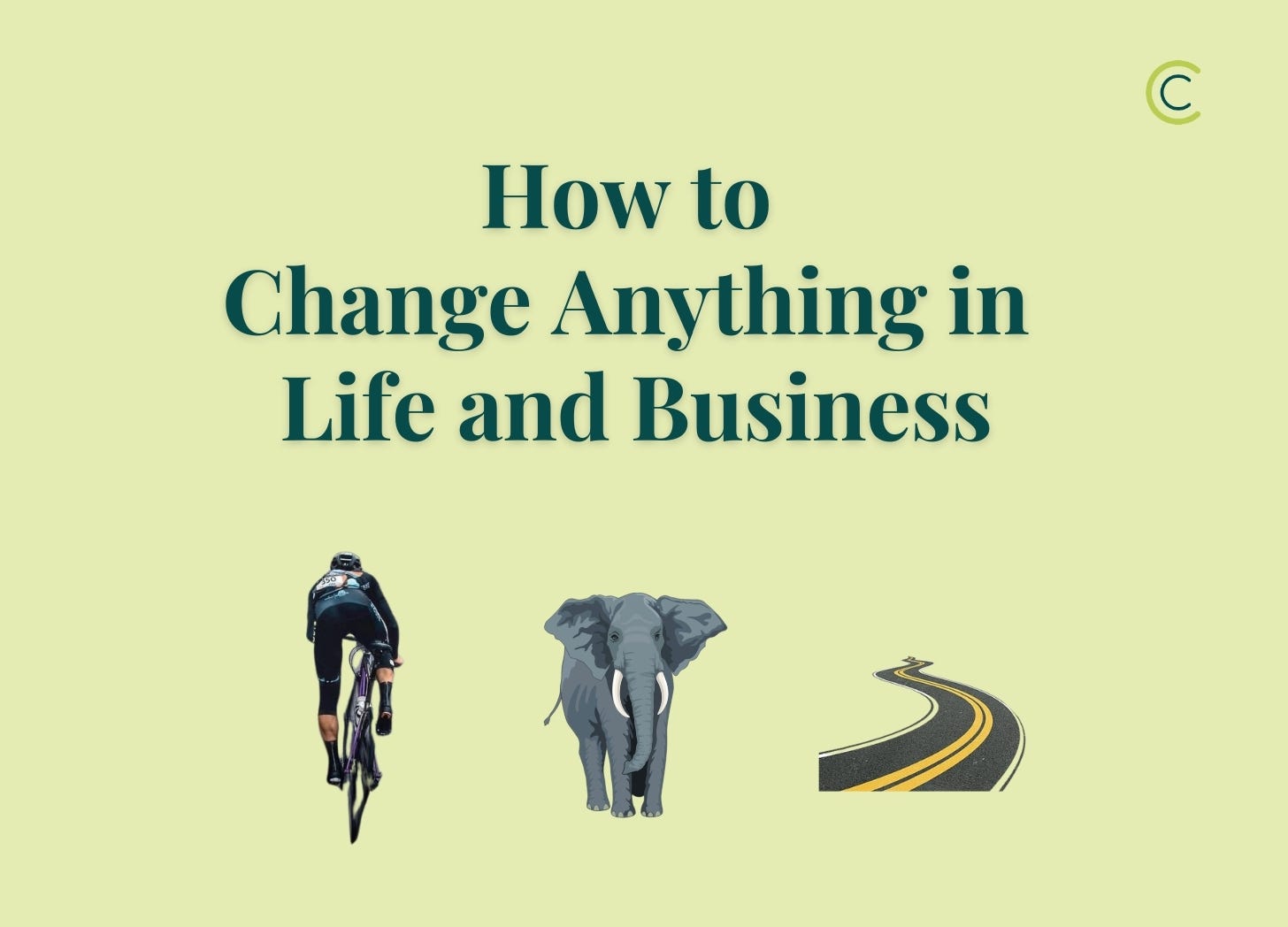How to Make Change Easier — Even When It Feels Impossible
A simple 3-part model that helps you take action, stay motivated, and create lasting change—starting with one small step.
We all want change—whether it’s getting healthier, being more productive, or simply living with more intention. But let’s face it: change is hard. We start strong, full of motivation, but often find ourselves slipping back into old patterns.
In the book Switch, authors Chip and Dan Heath explain that lasting change doesn’t just happen through willpower. It happens when we align three forces inside us: our rational mind, emotional drive, and environment. They call this the Switch Model, which breaks change down into three parts: Direct the Rider, Motivate the Elephant, and Shape the Path.
Let’s take a simple example—losing 10 pounds (or 5 kilograms)—and walk through how the model works.
First, direct the Rider.
The Rider represents your rational brain. It loves analyzing and planning. But if it’s overwhelmed or unclear, it stalls. This is why vague goals like “eat healthier” or “exercise more” don’t stick. You need specific, simple instructions. Try something like, “I will eat vegetables with lunch and dinner,” or “I will walk for 20 minutes after work every weekday.” Clear direction gives your logical brain something to hold onto and reduces decision fatigue.
Second, motivate the Elephant.
The Elephant is your emotional brain. It’s powerful—it provides the energy to move—but it needs to feel the change is worth it. If the Elephant isn’t on board, no amount of logic will move you forward. Find an emotional reason that connects deeply with you. Imagine being able to play with your kids without getting winded. Picture how it would feel to feel confident in your clothes. Track small wins, celebrate progress, and make the process enjoyable. The more emotionally rewarding the journey, the more likely the Elephant will keep going.
“People rarely succeed unless they have fun in what they are doing.” - Dale Carnegie
Third, shape the path.
Sometimes the problem isn’t you—it’s your environment. Make the good habits easy and the bad ones hard. Prepare healthy snacks in advance. Keep workout clothes visible. Avoid buying the junk food that tempts you late at night. Even small tweaks in your surroundings can make big changes easier to maintain.
“Success is the sum of small efforts, repeated day in and day out.” - Robert Collier
You don’t need a total life overhaul to create real change. You must guide the Rider with clear steps, inspire the Elephant with purpose, and shape the Path so that progress feels natural.
Change happens not in one big leap—but in small, steady shifts. And with the right strategy, you can change anything. I really mean it, I’ve lost 50 pounds (or 23 kilograms).
Three questions for self-reflection
What is one small, clear step I can take this week toward a change I want to make?
What emotional reason makes this change important to me right now?
How can I make my environment support the change instead of fighting against it?
P.S. If you're a tech professional looking to sharpen your communication skills, join me for a live 60-minute session on Saturday, April 5th at 7:00 AM Pacific Time. You can register here.


